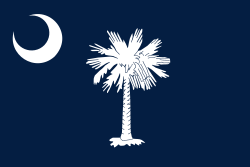This article includes a list of references, related reading, or external links, but its sources remain unclear because it lacks inline citations .(August 2013) |
| 5th South Carolina Cavalry | |
|---|---|
 Flag of South Carolina | |
| Active | January 18, 1863 to May 3, 1865 |
| Country | Confederate States of America |
| Allegiance | |
| Branch | Cavalry |
| Type | Regiment |
| Engagements | American Civil War |
| Commanders | |
| Notable commanders | Brig. Gen. Samuel W. Ferguson Brig. Gen. John Dunovant |
The 5th South Carolina Cavalry, also known as "Ferguson's Cavalry Regiment", was Confederate States Army Cavalry regiment in the American Civil War.